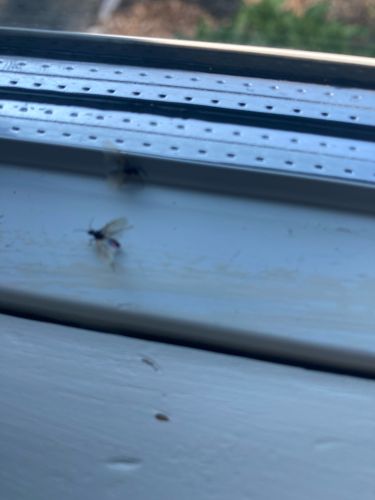Winged Termite
Scientific Name: Various genera and species, e.g., Reticulitermes (subterranean termites), Kalotermes (drywood termites)
Order & Family: Blattodea (formerly Isoptera), various families (Rhinotermitidae, Kalotermitidae, Termitidae, etc.)
Size: Typically 6 to 12 mm for alates, depending on the species.

Natural Habitat
Subterranean termites live in underground colonies or in moist, secluded areas above ground. Drywood termites live within the wood they infest. They can be found in natural environments like forests, as well as in human structures.
Diet & Feeding
Cellulose-based materials such as wood, paper, fabric, and other plant matter. Some species also consume fungi.
Behavior Patterns
Alates (winged reproductives) emerge from colonies during swarming events, often after rain and warm weather, to mate and establish new colonies. Once a queen and king find a suitable location, they shed their wings and begin to burrow, laying eggs and tending to the first generation of nymphs.
Risks & Benefits
Risks: Significant economic pests, causing extensive damage to homes, furniture, and other wooden structures. They can compromise the structural integrity of buildings. Benefits: In natural ecosystems, termites play a crucial role as decomposers, recycling nutrients from dead wood and plant matter back into the soil. They also aerate the soil and can be a food source for other animals.
Identified on: 8/14/2025